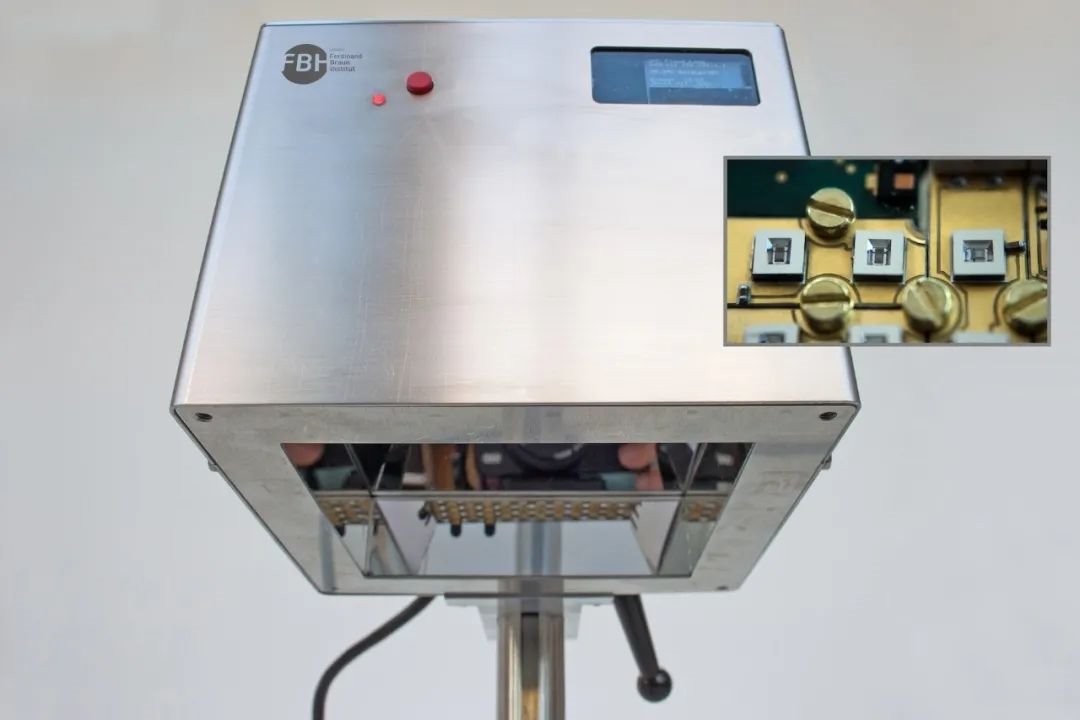Is 230nm UVLED light harmless to human body? German research team has used it against hospital bacteria
In Germany, between 400000 and 600000 hospital bacterial infections occur each year - about 10000 to 20000 people die. MDR (multidrug resistant) pathogens are usually not treated with antibiotics. One promising physical principle is that UVC light irradiation can be used to destroy microorganisms without producing resistance.
AlGaN LED emitting in the far ultraviolet spectrum has been developed by the Joint Laboratory of Gan optoelectronics, the Ferdinand Braun Institute (FBH) and the Berlin University of Technology (tub). LEDs emit wavelengths of about 230 nm and provide an output power of more than 1 MW.

Ferdinand Braun Institut's new LED irradiation system aims to kill microorganisms through ultra short wave ultraviolet radiation - no side effects
Unlike the long wave UVC radiation emitted by mercury vapor lamp, 230 nm ultraviolet light does not penetrate the life layer of skin. Therefore, it is hoped that it can be used without any damage, and the damage of natural repair can be minimized. The researchers hope this will help kill the MDR pathogen without any long-term side effects.
Within the framework of the vimre project (prevention of multidrug-resistant pathogen infections through in vivo UVC radiation), FBH has developed and produced a radiation system containing 118 arrays of these LEDs in an area of 8 cm x 8 cm. It achieves a maximum irradiation power of 0.2 MW / cm2 in the region of 6 cm x 6 cm, and the uniformity is more than 90%.
The first prototype has been delivered to the charit é dermatology department of Charlet University in Berlin for skin examination. Another device will soon be delivered to the Institute of health and environmental medicine at the medical center of Griffith Wald university to clarify its germicidal efficacy. Vimre is funded by the German Federal Ministry of education and Research (BMBF) and is part of the "advanced UV for life" program.
Tests conducted by two project partners using these devices were designed to demonstrate that UVC radiation is suitable for killing microorganisms, especially MDR pathogens (eradication). At the same time, it should be proved that such exposure is harmless to humans as long as a certain radiation dose is maintained. This will be validated using tissue samples of human skin as well as skin and mucous membrane models, as the preferred habitat for microorganisms such as MDR pathogens is the anterior nasal cavity and pharynx. To this end, charit é conducted a dose-dependent study to investigate possible DNA damage to irradiated skin.
Griffwald University Medical Center will determine how UV LED emitters can effectively kill MDR pathogens at 230 nm and compare the results with those of 254 nm and 222 nm UV lamps.
Zhang Hao: evaluation and application of UVA led photocatalysis technology for air sterilization and disinfection
Industry News · February 15, 2020 · 1653 views
Win win cooperation! Professor Ye Jichun and associate researcher Guo Wei of Ningbo Institute of materials, Chinese Academy of Sciences visited our company
Company News · July 31, 2018 · 1888 views
Biological safety of 222 nm lamp for sterilization
Industry News · December 19, 2020 · 2393 views
It does not destroy the nutrition and flavor. UVC ultraviolet is perfect for juice sterilization
Technical Sharing · November 3, 2018 · 1045 views
Good News | Warmly Celebrating Our Company's Dr. Chen Jingwen's Selection into the "China Optics Valley 3551 Talent Plan"
Company News · June 28, 2023 · 521 views
UV in the refrigerator can play a role in sterilization
Technical Sharing · November 15, 2017 · 1303 views
Good news | Youweixin Technology has been awarded the 2024 Hubei Province Manufacturing Industry Single Champion Enterprise
Company News · April 21st · 48 views
[video tutorial] deep design of deep UV uvc-led sterilization scheme
Technical Sharing · February 11, 2020 · 1525 views
